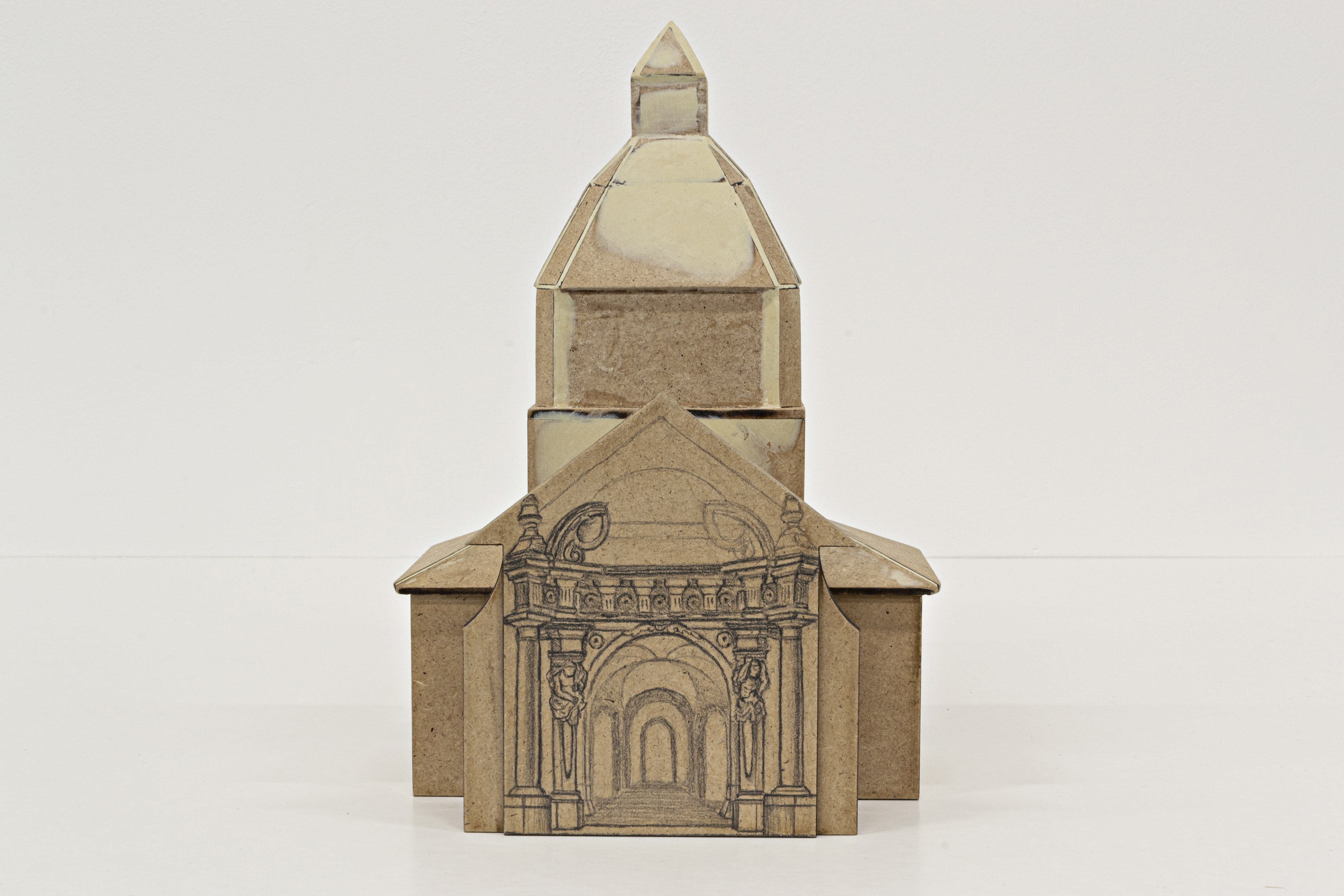

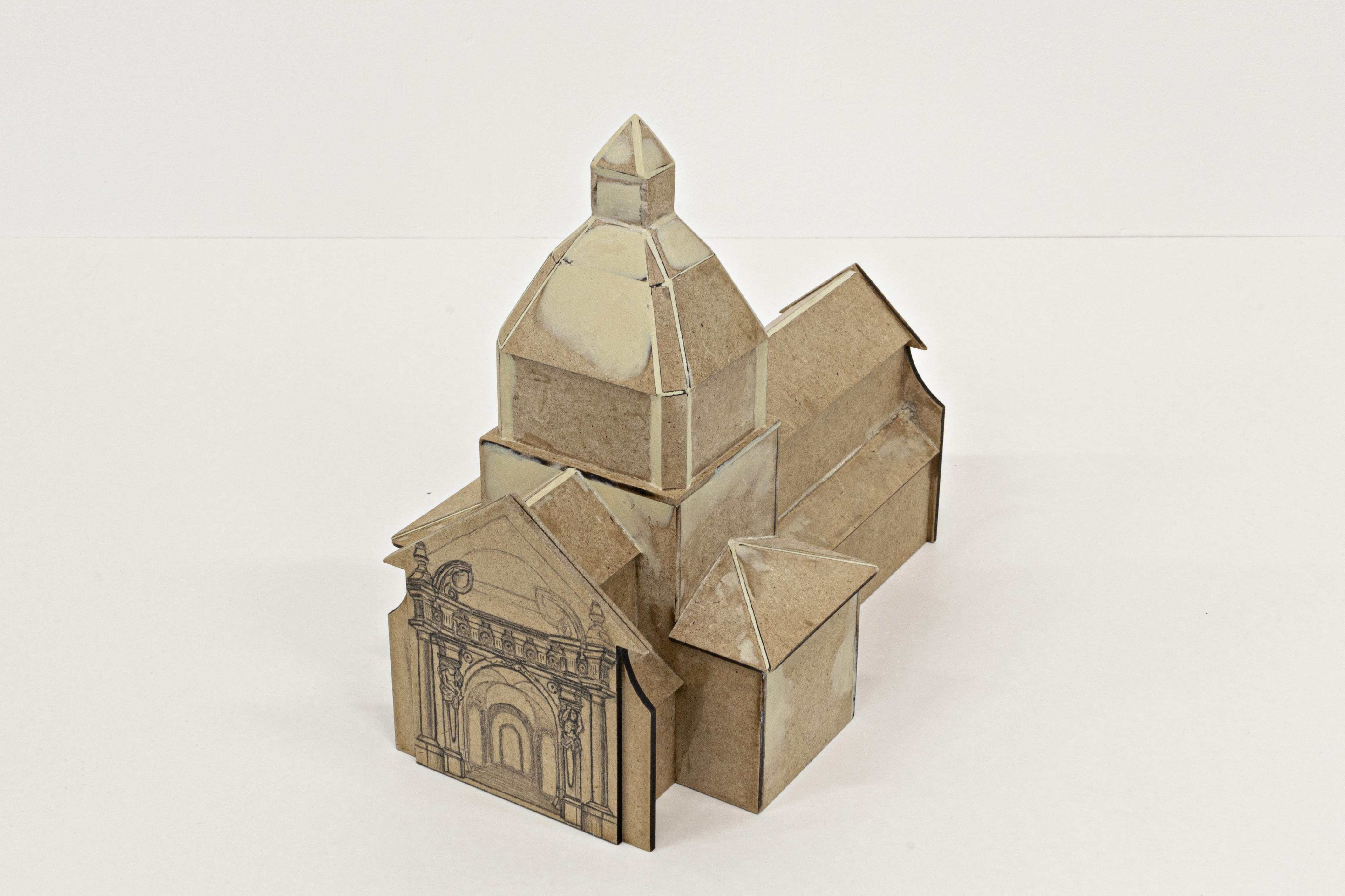

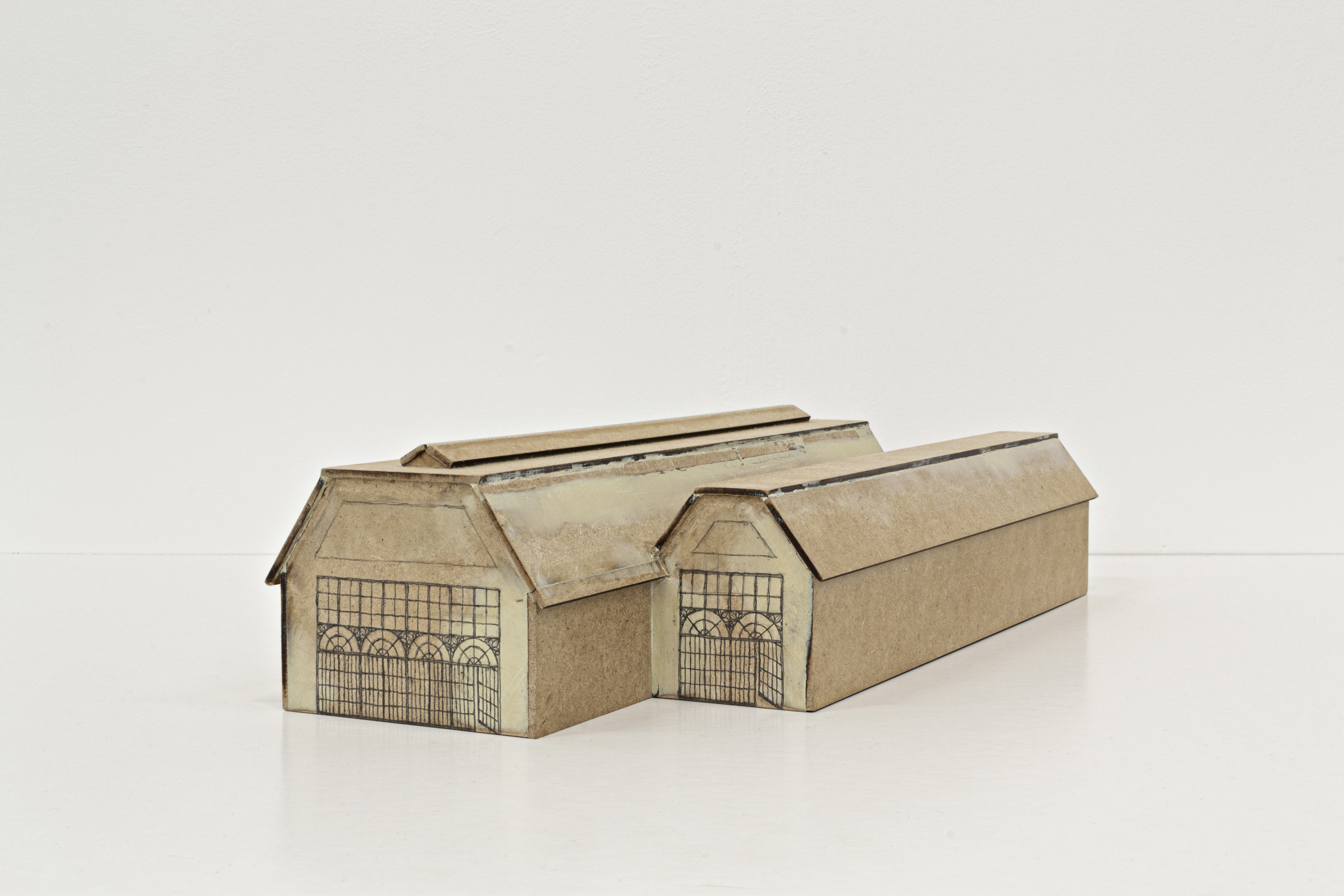


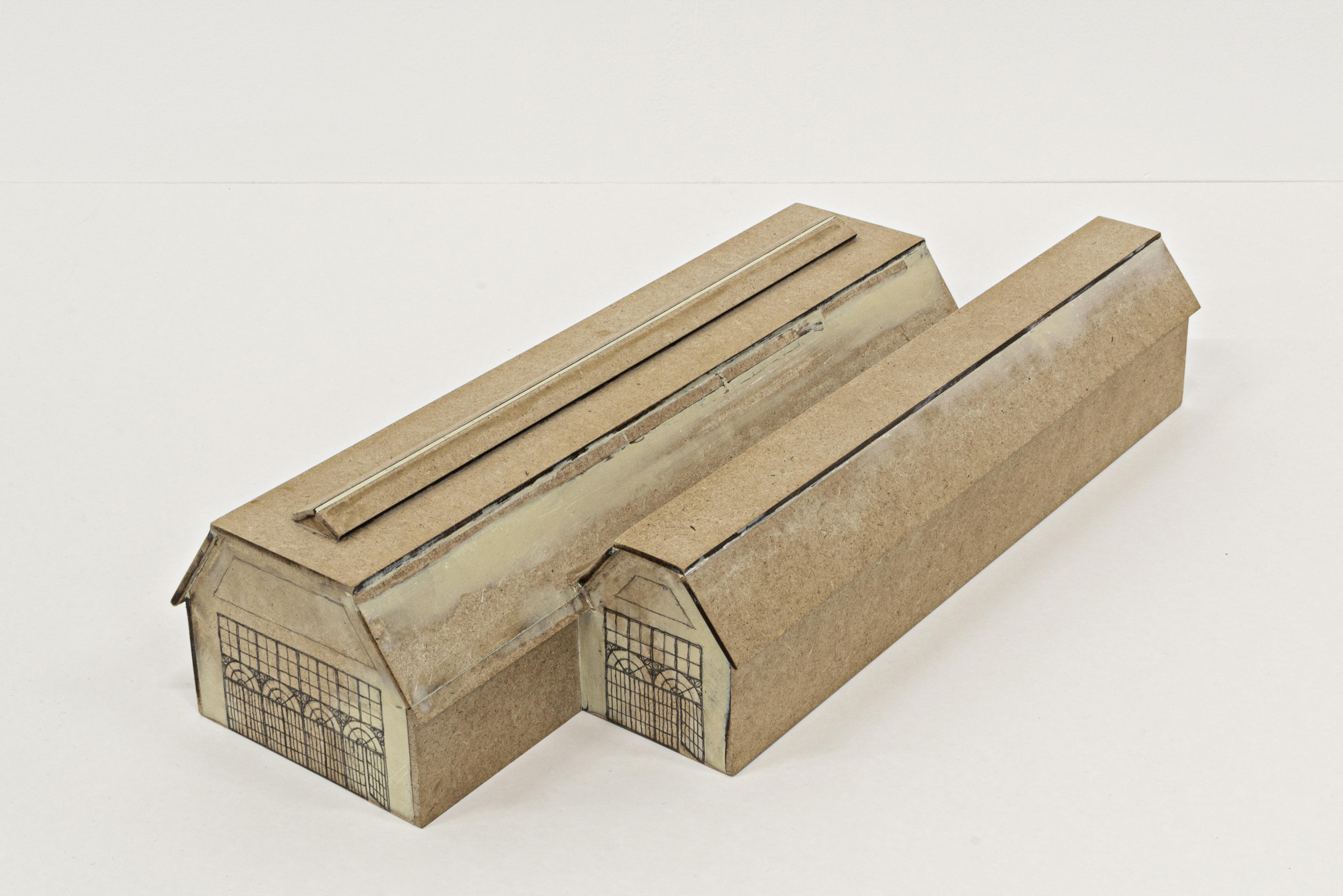


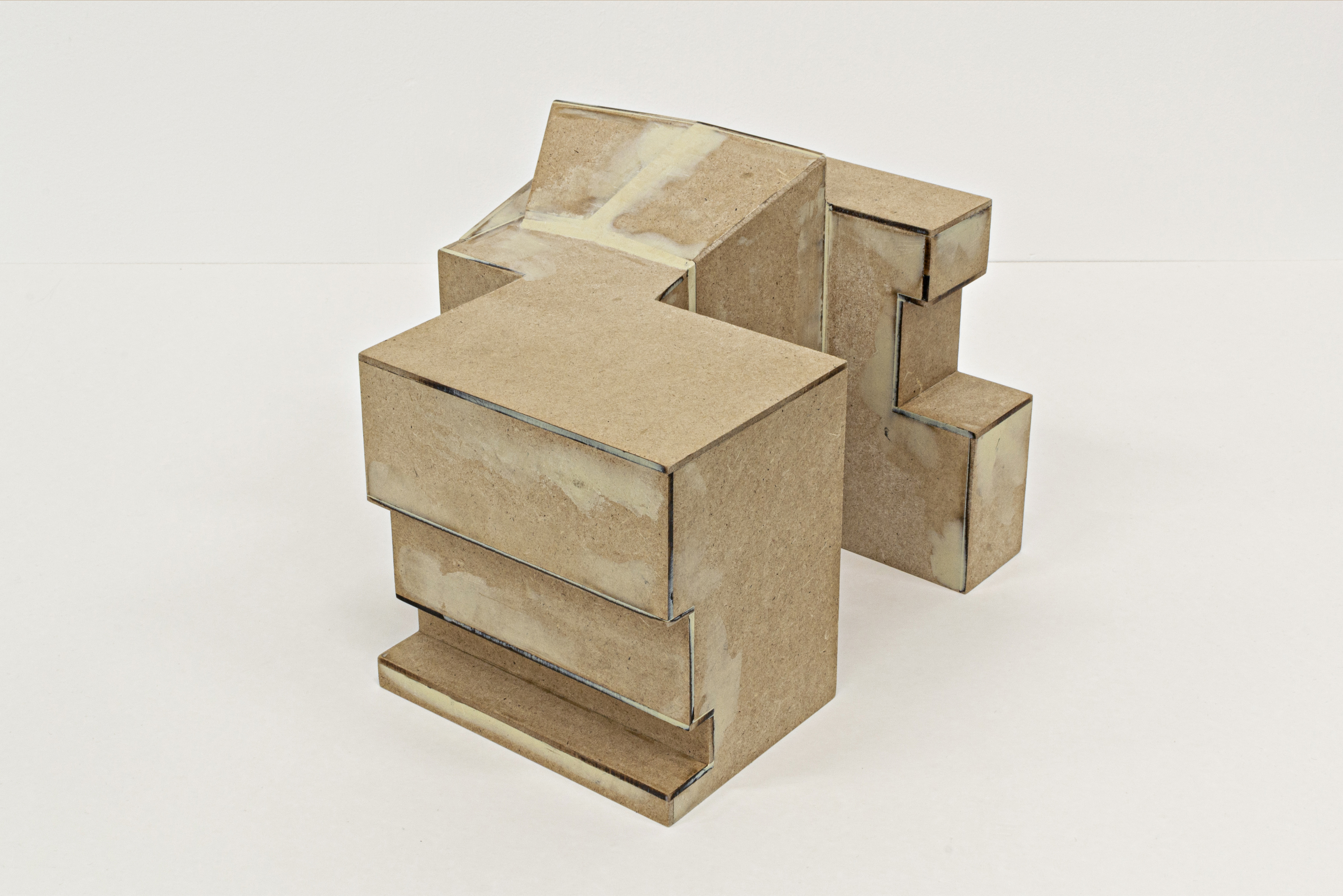
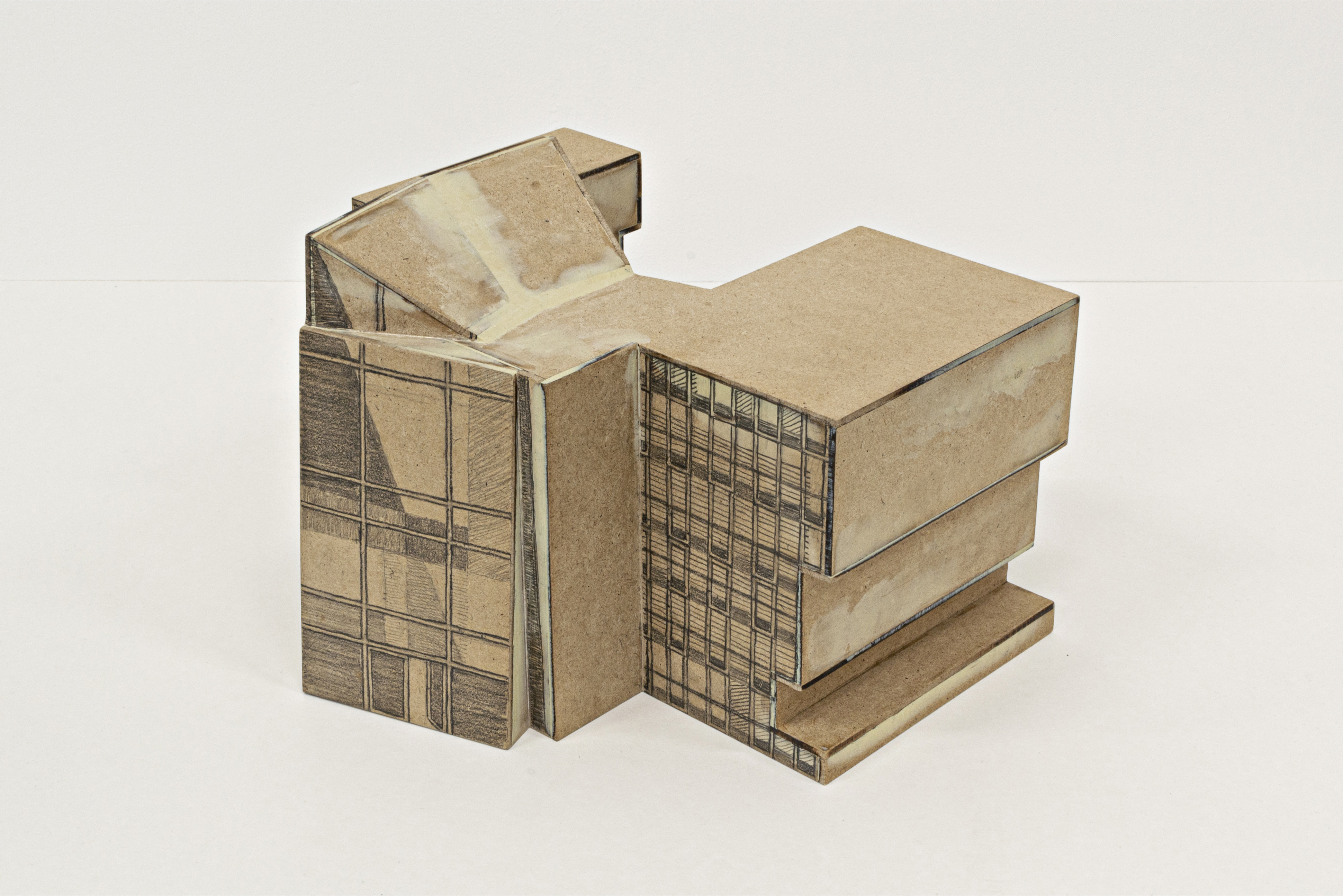
sculpture
EURO BUILDINGSmaterial: MDF, graphite pencil
dimensions: Cathedral, 29x16x25 cm; Factory, 42x18x10cm; Bank, 23x26x20cm.
year: 2023
In Euro Buildings, Lazar Stojić fully detaches the fictional architecture of the euro banknotes from their two-dimensionality while analyzing them in the context of historical structures of value and power. To do so, Stojić interprets the buildings on the 100-euro (Baroque and Rococo), 200-euro (Iron and Glass), and 500-euro (Postmodern) banknotes as sites of power representation. Adapted to each period and architectural design, sculptures of a cathedral, a factory and a bank were created.
text: Luise Nübling